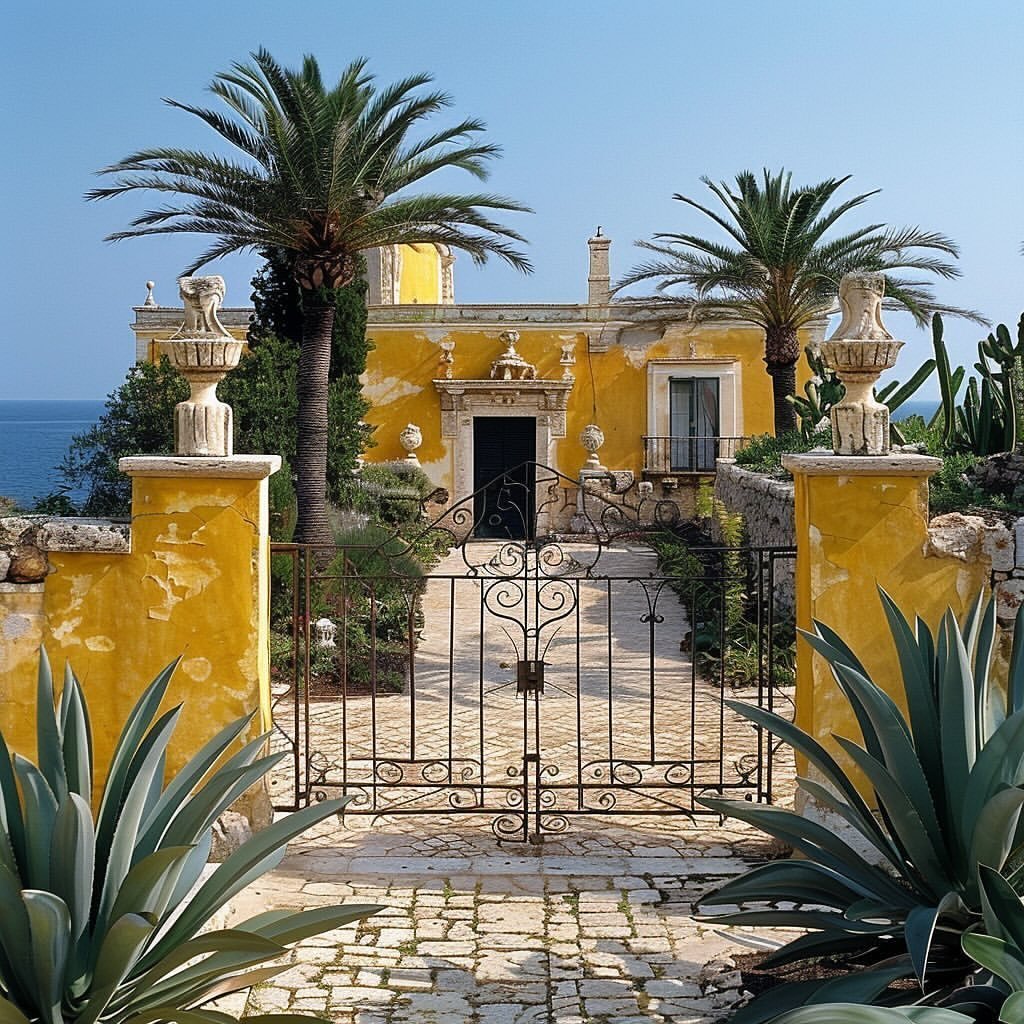Vivid. Timeless. Sublimely imperfect.
Baptist Bohu’s yellow Mediterranean concept project has taken over the internet—and it’s easy to see why.
From Pinterest boards to architecture Instagrams, and from lifestyle influencers to design critics, the response has been unanimous: this is design euphoria. But why, really? Why does this crumbling yellow villa spark so much admiration, longing, and emotional reaction?
The answer lies at the intersection of color psychology, architectural nostalgia, and the human craving for sensorial belonging. This article explores the deeper psychological reasons this project resonates so deeply with millions online—and what it reveals about the kind of spaces we are all craving.
The Golden Spell and Why Yellow Hits So Hard
At the center of Bohu’s concept is color—specifically, an aged, sun-splashed yellow. Not a sterile pastel or neon pop, but an evocative, crumbling ochre. This is not a decorator’s yellow—it’s a storyteller’s yellow. It triggers more than visual pleasure; it activates memory.
According to research in color psychology, yellow is associated with optimism, vitality, and warmth, but when combined with signs of decay, as in these textured facades, it awakens melancholy and nostalgia. This duality is irresistible.

Why This Matters Emotionally
- Yellow stimulates serotonin production, making us feel alert and alive.
- Aged textures signal time passed, which prompts the brain to recall autobiographical memories.
- The emotional contrast between light and decay taps into a universal human theme: beauty that doesn’t last.
This is not a polished luxury—it’s imperfect grandeur, and our nervous systems trust it more.

The Power of Sensory Saturation
In a digital world filled with sterile minimalism, Bohu’s project is a sensory feast. From the rippling shadow of bougainvillea over dinner plates to the tactile roughness of stone, this is architecture that awakens your whole body.

Why We Crave This
Neuroscience shows that multisensory spaces regulate the nervous system. Environments with texture, sound, scent, and natural variation reduce mental fatigue and promote restoration.
Bohu’s design does this exceptionally well:
- Light and color mimic the sun and sea, triggering calm-alertness.
- Raw materials like stone and ceramic create grounding tactile experiences.
- Plants and nature provide rhythm, familiarity, and micro-movements.
We don’t just see this house—we imagine living in it with our senses fully awake. That’s the hook.
A Home That Offers Escape Without Pretending
This project is not a fantasy of wealth or power. It’s a fantasy of emotional permission. It gives you a place to slow down, to breathe, to be imperfect.
Peeling paint, unpolished tile, crooked sinks—these aren’t flaws. They’re signals. This home says:
- You can leave dishes in the sink.
- You can walk barefoot and not rush anywhere.
- You can rest without guilt.
In a world built on speed, this villa invites you to unperform.

The Psychology Behind It
According to environmental psychologist Susan Clayton, people increasingly seek environments that offer restorative identity—places that allow them to return to who they feel they are, beneath the performance.
Bohu’s design says: you’re already enough.

Why Mediterranean Symbols Still Matter
There’s a reason people across cultures are obsessed with the Mediterranean look. The arches, stonework, tiled floors, clay pots, and domed roofs aren’t simply style elements—they’re emotional icons.
They represent:
- Rhythm and ritual
- Time outdoors
- Meals shared with intention
- Sensual, seasonal living
In many urban lives today, we lack these rhythms. This villa, even as a digital concept, feels like home to our nervous systems.

Why This Project Went Viral
Of course, it’s visually stunning. But that’s not enough for virality.
This project works online because it causes a micro emotional shift—the moment of pause, breath, daydream. That’s when people hit save, share, or repost.
It also has the perfect storm of engagement:
- Bold color contrast (yellow and blue)
- Centered, symmetrical compositions
- Lifestyle integration (set tables, open doors, sunlight)
- Implied story (you imagine who lives here)
It’s not just scrollable. It’s inhabitable.

Why This Style Reflects a Bigger Shift
The popularity of Bohu’s villa is not a fluke. It mirrors what more people are craving from spaces:
- From perfect to patinated
- From new builds to aged charm
- From clean lines to soulful textures
We are moving into an era where design is expected to feel. And not feel like a catalog—but like a memory, a story, a permission slip.
This villa is architecture as nervous system regulation. A living mood board for a more human future.

Where This Is All Going
Here’s what Bohu’s viral moment tells us about where design is headed:
- Emotional resonance matters more than novelty.
- Wabi-sabi, textured luxury will outpace sleek minimalism.
- Nostalgia and cultural memory will guide future interiors.
- Multisensory design will move from trend to wellness standard.
- Design will be judged by how it feels—not just how it looks.

The Real Reason People Are Obsessed
This house isn’t viral because it’s yellow.
It’s viral because it reminds people of themselves—before they were rushed, stressed, or dulled by screens.
It’s a house that gives you permission to be unpolished and still completely at home.
It doesn’t sell you an identity—it offers you a return.



